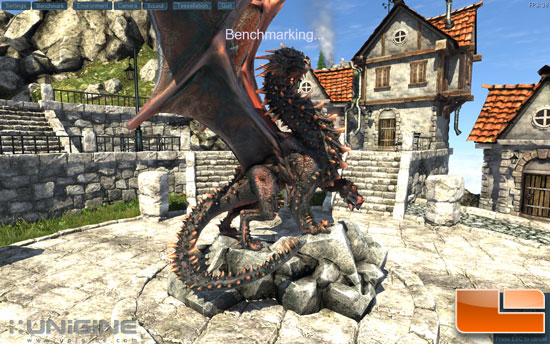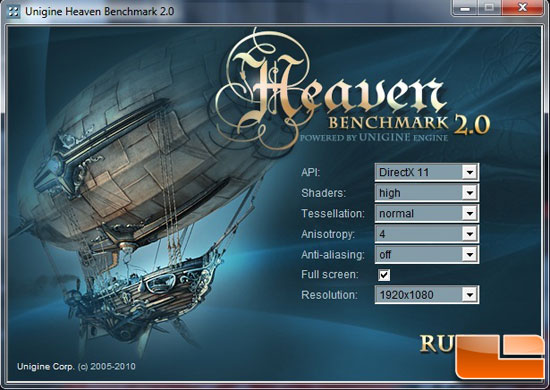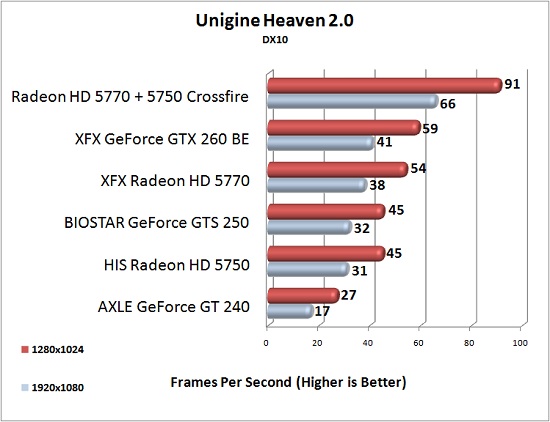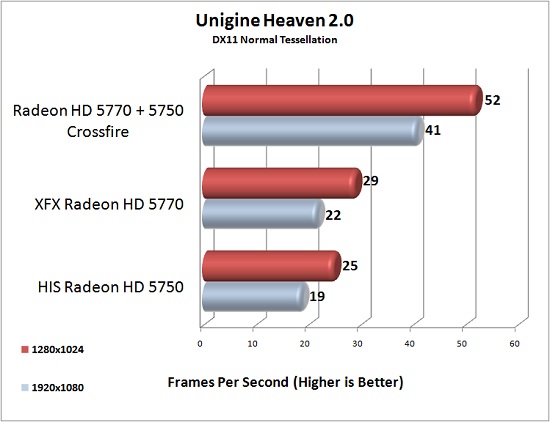XFX Radeon HD 5770 1GB GDDR5 Video Card Review
By
Unigine Heaven 2.0

The ‘Heaven’ benchmark that uses the Unigine easily shows off the full
potential of DirectX 11 graphics cards. It reveals the enchanting magic
of floating islands with a tiny village hidden in the cloudy skies. With
the interactive mode emerging, experience of exploring the intricate
world is within reach. Through its advanced renderer, Unigine is one of
the first to set precedence in showcasing the art assets with
tessellation, bringing compelling visual finesse, utilizing the
technology to the full extent and exhibiting the possibilities of
enriching 3D gaming. The distinguishing feature of the benchmark is a
hardware tessellation that is a scalable technology aimed for automatic
subdivision of polygons into smaller and finer pieces so that developers
can gain a more detailed look of their games almost free of charge in
terms of performance. Thanks to this procedure, the elaboration of the
rendered image finally approaches the boundary of vertical visual
perception: the virtual reality transcends conjured by your hand.
potential of DirectX 11 graphics cards. It reveals the enchanting magic
of floating islands with a tiny village hidden in the cloudy skies. With
the interactive mode emerging, experience of exploring the intricate
world is within reach. Through its advanced renderer, Unigine is one of
the first to set precedence in showcasing the art assets with
tessellation, bringing compelling visual finesse, utilizing the
technology to the full extent and exhibiting the possibilities of
enriching 3D gaming. The distinguishing feature of the benchmark is a
hardware tessellation that is a scalable technology aimed for automatic
subdivision of polygons into smaller and finer pieces so that developers
can gain a more detailed look of their games almost free of charge in
terms of performance. Thanks to this procedure, the elaboration of the
rendered image finally approaches the boundary of vertical visual
perception: the virtual reality transcends conjured by your hand.

For both DirectX 11 and 10 and both resolutions, Heaven was set to high shaders, with 4x AF, and 0x AA, normal tessellation mode was used when in DirectX 11.

Yet again mix crossfire tore this test up, with a 30fps gain at the low resolution, and 20fps at 1920×1080. Again the XFX Radeon HD 5770 came just behind the GeForce GTX 260 Black, with a healthy lead over the HD 5750 and GTS 250.

With serious tessellation added into the mix, the mix crossfire setup doubled the performance of each single card, with the XFX Radeon HD 5770 still just a few fps ahead of the HD 5750.

Comments are closed.